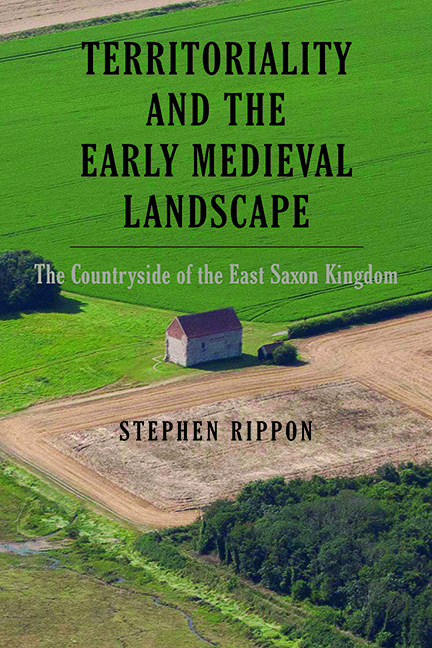Book contents
- Frontmatter
- Dedication
- Contents
- List of Illustrations
- List of tables
- List of Abbreviations
- Acknowledgements
- Glossary
- Preface
- Part I Background
- Part II The Early Folk Territories
- Part III Discussion and Analysis
- Appendix 1 Domesday Population Densities Across the ‘Rochford Peninsula’ Early Folk Territory
- Appendix 2 Sites Used in the Analysis of Animal Bone Assemblages
- Appendix 3 Sites Used in the Analysis of Charred Cereal Assemblages
- Bibliography
- Index
- Garden and Landscape History
Chapter 3 - Reconstructing Early Medieval Folk Territories
Published online by Cambridge University Press: 26 May 2022
- Frontmatter
- Dedication
- Contents
- List of Illustrations
- List of tables
- List of Abbreviations
- Acknowledgements
- Glossary
- Preface
- Part I Background
- Part II The Early Folk Territories
- Part III Discussion and Analysis
- Appendix 1 Domesday Population Densities Across the ‘Rochford Peninsula’ Early Folk Territory
- Appendix 2 Sites Used in the Analysis of Animal Bone Assemblages
- Appendix 3 Sites Used in the Analysis of Charred Cereal Assemblages
- Bibliography
- Index
- Garden and Landscape History
Summary
RECONSTRUCTING EARLY FOLK TERRITORIES is not easy, and it relies very heavily upon piecing together fragments of evidence from later sources. Previous studies have tended to focus on documentary material for individual regiones, of which Steven Bassett's (1997) study of the Rodings in Essex is a good example of the diverse sources that can be used (although he greatly underestimated the extent of the regio: see Chapter 8). Other attempts at reconstructing regiones have been rather more rudimentary and speculative in their approach, with little detailed description of the underlying evidence. There has also been a tendency for archaeologists and historians to discuss regiones, royal vills, communal meeting places and minster parishes as separate topics, rather than adopting a more integrated approach. Scholars have also tended to study the early medieval landscape within the counties recorded in Domesday, which leads to an assumption – rarely explored – that the boundaries of seventh- and eighth-century regiones were coterminous with those of tenth-century and later shires. This author made that mistake in Beyond the Medieval Village (Rippon 2008), which covered the historic county of Somerset, but it was only when Devon and Dorset were included in a later study – Making Sense of An Historic Landscape (Rippon 2012a) – that it became clear that Somerset's boundaries sliced through a series of earlier folk territories (Rippon 2012a). The approach adopted here is therefore to bring together a very wide range of source material in reconstructing regiones across an entire region that will have been meaningful to people in the past: the Northern Thames Basin that appears to have corresponded to the maximum extent of the East Saxon kingdom. The methodology used has already been introduced by the author in the aforementioned studies of south-west England (Rippon 2008; 2012a), but further discussion is required here as some of the source material available for Essex, Hertfordshire, Middlesex and Suffolk is different to that in Devon, Dorset and Somerset.
One of the first attempts at unravelling the early territorial history of the East Saxon kingdom was Rickword's (1911; 1913) division of Essex into 70 ‘Tribal Hundreds’ that equated to the 7,000 hides attributed to the East Saxons in the Tribal Hidage.
- Type
- Chapter
- Information
- Territoriality and the Early Medieval LandscapeThe Countryside of the East Saxon Kingdom, pp. 59 - 84Publisher: Boydell & BrewerPrint publication year: 2022



